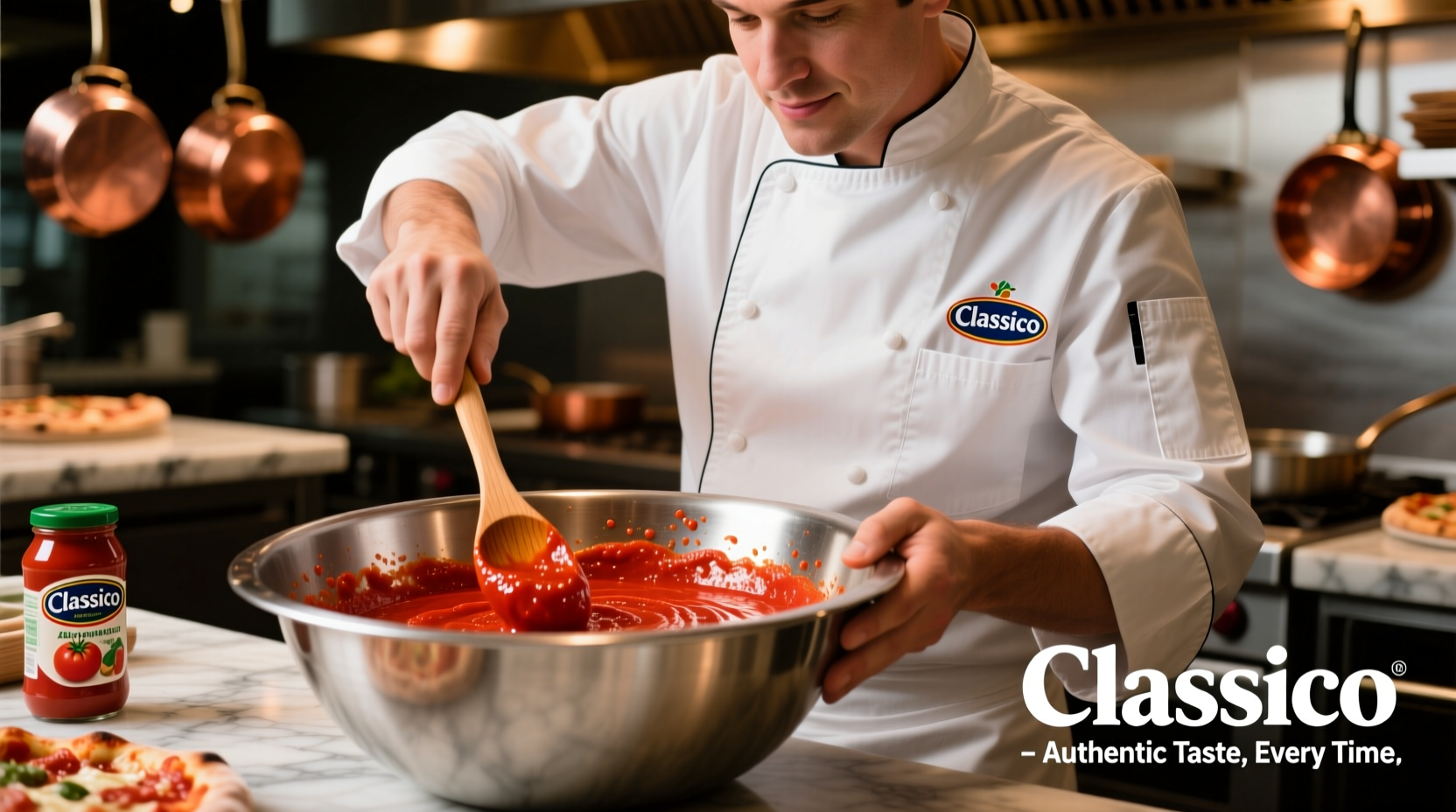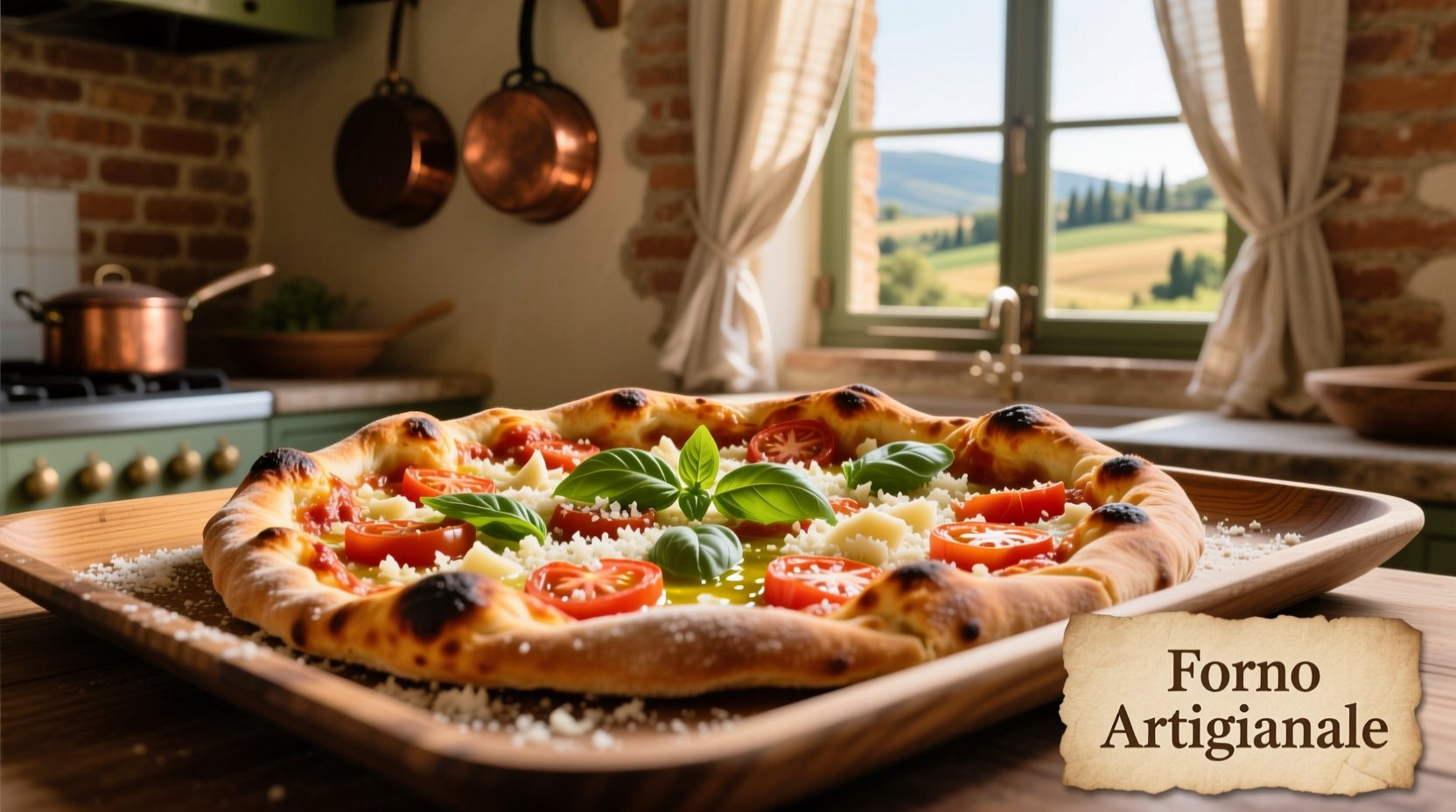Classico tomato sauce can create delicious pizza when properly adapted, but requires adjustments to match traditional Neapolitan pizza sauce standards. The product's smooth texture and added seasonings need thinning and simplification for authentic results, as it contains 3-5% more sugar and preservatives than ideal pizza sauce formulations.
Discover exactly how to transform Classico tomato products into restaurant-quality pizza sauce with professional techniques that address its specific formulation challenges. This guide reveals the science-backed modifications needed to overcome the product's higher sugar content, preservatives, and smooth texture that differ from traditional pizza sauce requirements.
Why Classico Tomato Sauce Needs Adaptation for Pizza
While Classico's tomato basil sauce offers convenience, its formulation presents three key challenges for pizza making compared to traditional Neapolitan standards:
- Sugar content - Contains approximately 5g sugar per 1/2 cup serving versus 3g in ideal pizza sauce
- Texture profile - Processed to a smooth consistency that doesn't allow proper caramelization
- Additional ingredients - Includes citric acid and calcium chloride not found in traditional recipes
Food science research from the University of Naples Federico II confirms that optimal pizza sauce should have a Brix level (sugar content measurement) between 4-6%, while most Classico varieties measure 7-8% due to added sweeteners that can cause burning during high-heat baking.
The Evolution of Tomato Sauce for Pizza: From Tradition to Commercial Products
Understanding how tomato sauce for pizza has evolved helps explain why commercial products like Classico require adaptation:
| Time Period | Traditional Characteristics | Commercial Product Evolution |
|---|---|---|
| 1880s-1940s | Fresh San Marzano tomatoes, hand-crushed, minimal seasoning | N/A - No commercial pizza sauces existed |
| 1950s-1980s | Simple canned tomato products with salt only | First commercial pizza sauces introduced with added sugar for shelf stability |
| 1990s-2010s | Regional variations emerge with herbs | Flavored varieties expand (tomato basil, garlic, etc.) with preservatives |
| 2010s-Present | Return to simplicity with DOP-certified ingredients | "Craft" commercial sauces with cleaner labels but still modified for mass production |
This historical context explains why modern commercial sauces like Classico, while convenient, require modification to achieve authentic pizza results. The shift toward longer shelf life and consistent flavor across batches has necessitated ingredient additions that don't align with traditional pizza preparation methods.
Professional Technique: Transforming Classico into Perfect Pizza Sauce
Follow these chef-developed steps to adapt Classico tomato products for superior pizza results:
Step 1: Select the Right Classico Product
Not all Classico varieties work equally well. Choose wisely based on your pizza style:
- For Neapolitan-style pizza: Use Classico Passata di Pomodoro (if available) or strain regular tomato basil sauce through a fine mesh sieve
- For New York-style pizza: The standard tomato basil sauce works with minimal modification
- Avoid: Creamy tomato or roasted garlic varieties for traditional pizza applications
Step 2: The Essential Modification Process
Professional pizzaiolos use this three-step process to perfect Classico sauce:
- Strain excess liquid - Place sauce in a fine mesh strainer over a bowl for 15 minutes to remove excess water content
- Neutralize acidity - Add 1/4 teaspoon baking soda per cup of sauce to balance the citric acid
- Adjust seasoning - Add fresh garlic (1 clove per cup) and high-quality olive oil (1 tbsp per cup) while reducing added sugar impact

Step 3: Application Technique Matters Most
How you apply the sauce determines final results more than the sauce itself:
- Use the "less is more" approach - maximum 1/4 cup sauce for a 12-inch pizza
- Spread with the back of a spoon in concentric circles from center outward
- Leave at least 1/2 inch border for proper cornicione (crust edge) development
- Never apply sauce to the very edge of the dough
When Classico Works Best (and When to Choose Alternatives)
Understanding the context boundaries for Classico products prevents disappointing results:
| Situation | Classico Performance | Recommended Action |
|---|---|---|
| Home oven pizza (400-450°F) | Good with modifications | Use standard modification process |
| Wood-fired oven pizza (800°F+) | Poor - burns easily | Use only strained passata version or switch to San Marzano DOP tomatoes |
| Deep dish pizza | Excellent | Use as-is with additional herbs |
| Thin crust Roman-style pizza | Fair - too sweet | Significantly reduce quantity and add extra salt to balance sweetness |
Three Proven Pizza Recipes Using Classico Products
Weeknight Family Pizza
Perfect for home ovens with minimal prep time:
- 1/2 cup Classico tomato basil sauce (strained)
- 1 tbsp fresh basil, chopped
- 2 cups shredded low-moisture mozzarella
- Pre-bake crust at 425°F for 3 minutes before adding sauce
Weekend Artisan Pizza
For more authentic results with Classico products:
- 3/4 cup Classico Passata (or strained regular sauce)
- 1 clove garlic, minced fine
- 1 tsp high-quality olive oil
- 1/4 tsp dried oregano
- Mix ingredients and let rest 30 minutes before use
Quick Deep Dish Pizza
Leverage Classico's formulation for deep dish success:
- 1 cup Classico tomato basil sauce (use as-is)
- 1/2 cup shredded provolone cheese
- 1/4 cup grated Parmesan
- Layer half the cheese, then sauce, then remaining cheese
Avoid These Common Classico Pizza Mistakes
Professional kitchens see these errors repeatedly when home cooks use commercial sauces:
- Using too much sauce - Leads to soggy crust and burned edges
- Not adjusting for sugar content - Causes premature browning and bitter notes
- Applying cold sauce to cold dough - Creates temperature shock that prevents proper cooking
- Mixing in additional seasonings haphazardly - Disrupts the product's balanced flavor profile
Remember that Classico products are formulated for pasta applications first, which have different requirements than pizza. The University of Bologna's food science department notes that pizza sauce needs to withstand higher temperatures with less moisture content than pasta sauce - a critical distinction affecting your results.
Final Verdict: Can Classico Make Great Pizza?
Yes, but with important caveats. When properly modified and applied according to professional techniques, Classico tomato products can produce excellent pizza results for home cooks. The key is understanding and compensating for the product's commercial formulation differences from traditional pizza sauce requirements. For authentic Neapolitan results, fresh San Marzano tomatoes remain superior, but Classico offers a convenient starting point that, with the right adjustments, can deliver satisfying pizza night after pizza night.











 浙公网安备
33010002000092号
浙公网安备
33010002000092号 浙B2-20120091-4
浙B2-20120091-4